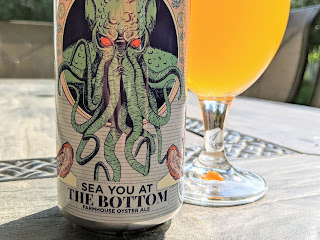A blog by someone who has a love of great food, craft beer, fine wine and, of course, cooking.
Saturday, October 30, 2021
Chef Bolek's Scariest Moments in the Kitchen
Friday, October 22, 2021
Pumpkin Spice Mix
PUMPKIN SPICE MIX
Recipe from The Kitchn
Ingredients:
- 1 tablespoon ground cinnamon
- 2 teaspoons ground ginger
- 1/2 teaspoon ground allspice
- 1/2 teaspoon ground cloves
- 1/2 teaspoon ground mace
- 1/2 teaspoon ground nutmeg
Directions:
Combine all of the ingredients together and stir until well-mixed. Store in an airtight container at room temperature for up to one year.
ENJOY!
Friday, October 15, 2021
Asari No Sumashijiru (Japanese Clam Soup)
ASARI NO SUMASHIJIRU (JAPANESE CLAM SOUP)
Recipe available at The Spruce Eats
Serves 4
Ingredients:
- 1 pound manila clams
- 5 cups water
- Kosher salt, to taste
- 1 lemon, zested
- Mitsuba (wild Japanese cilantro), for garnish
Directions:
1. Cook the clams. In a medium pot, bring water to a boil. Reduce heat to medium and add a bit of salt to the water (approximately 1/2 to 1 teaspoon salt). Add fresh clams directly into the boiling water. Cook until all the clams open. If there are any unopened clams, remove them from the pot and discard.
2. Finish the dish. While the clams are are cooking, zest the lemon using a microplane or a peeler. Serve four to five clams in small soup bowls and pour broth over them. Garnish with lemon zest and Japanese parsley. Serve immediately.
ENJOY!
Thursday, October 7, 2021
Sea You At the Bottom
Friday, October 1, 2021
In Search of Orange Gold: Part One - An Introduction
 |
| (Illustration: Maximilian Franz) |
 |
| Photo: Baltimore.org |














